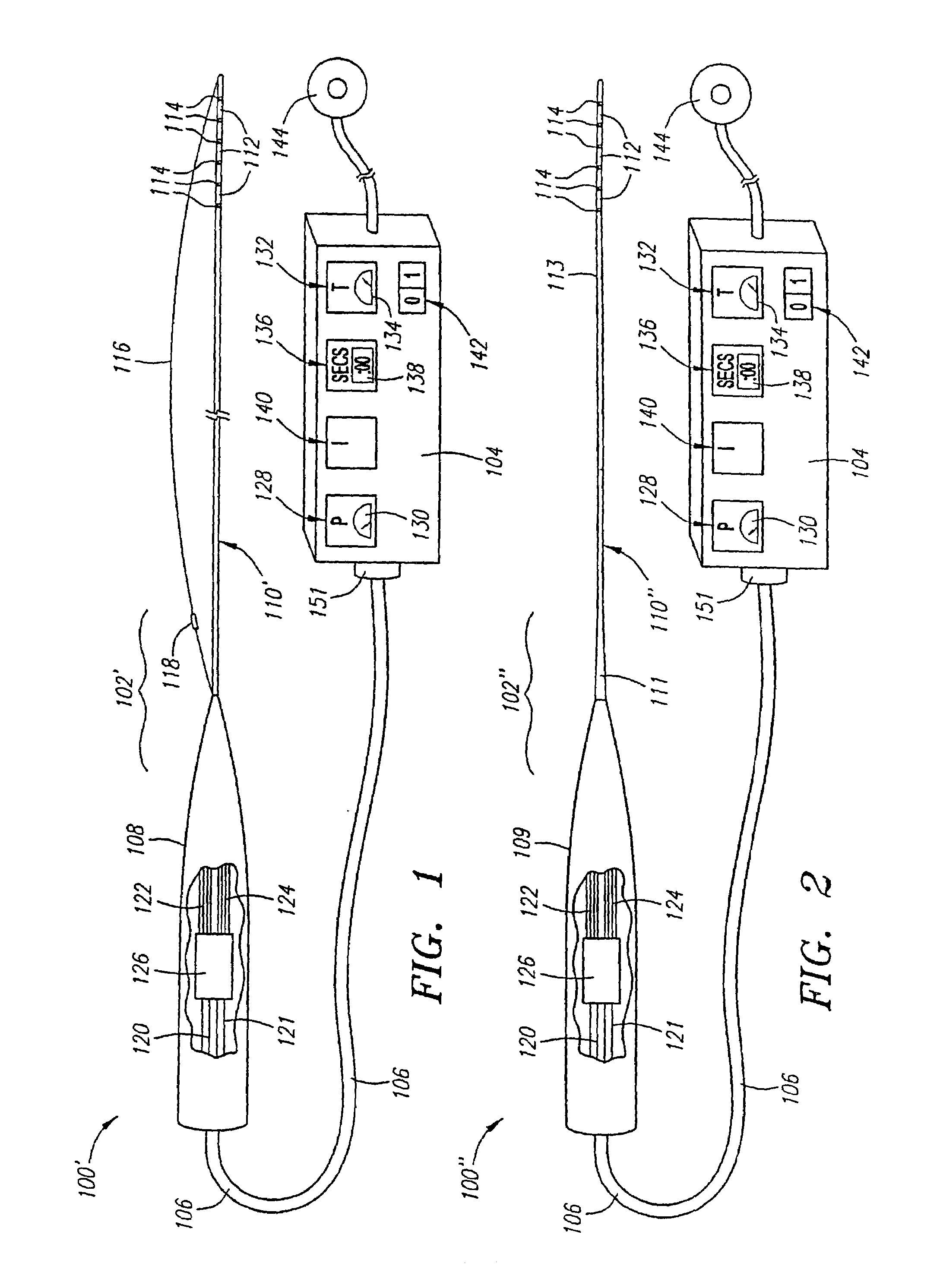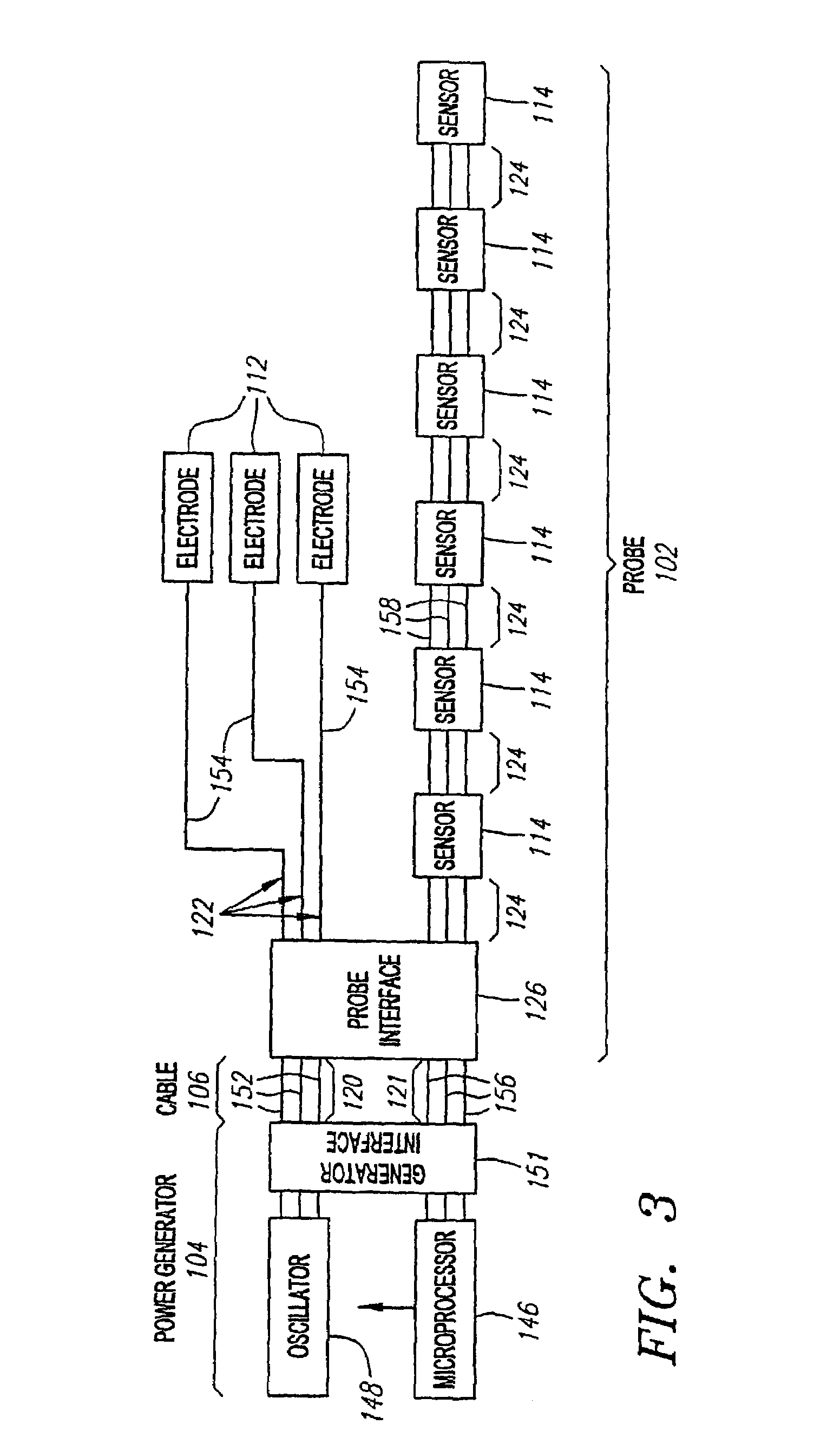Medical probe with reduced number of temperature sensor wires
a technology of temperature sensor wires and medical probes, applied in the field of medical probes, can solve the problems of increasing the difficulty of manufacturing such medical probes, reducing the reliability of connectors, and increasing the cost of manufacturing accessories for medical probes supporting multiple sensors, etc., and achieves the effect of little or no nois
- Summary
- Abstract
- Description
- Claims
- Application Information
AI Technical Summary
Benefits of technology
Problems solved by technology
Method used
Image
Examples
Embodiment Construction
[0060]In a preferred embodiment, the system of the present invention is applicable to medical probes, such as catheters and surgical probes, that rely on temperature feedback to regulate ablation therapy. To this end, temperature sensors located at the distal end of a probe body communicate temperature measurements of the target tissue to an ablation power generator. Such temperature measurement communication is preferably accomplished digitally to take advantage of the benefits disclosed herein, such as noise resistance and simplicity of manufacture, but can alternatively be accomplished through analog means. Multiple temperature sensors are preferably connected together in parallel at the distal end of the probe to reduce the number of wires between the temperature sensors and the power generator. Alternatively, the multiple temperature sensors are connected together in parallel at an interface located in the handle of the probe to reduce the number of wires between the handle of ...
PUM
 Login to View More
Login to View More Abstract
Description
Claims
Application Information
 Login to View More
Login to View More - R&D
- Intellectual Property
- Life Sciences
- Materials
- Tech Scout
- Unparalleled Data Quality
- Higher Quality Content
- 60% Fewer Hallucinations
Browse by: Latest US Patents, China's latest patents, Technical Efficacy Thesaurus, Application Domain, Technology Topic, Popular Technical Reports.
© 2025 PatSnap. All rights reserved.Legal|Privacy policy|Modern Slavery Act Transparency Statement|Sitemap|About US| Contact US: help@patsnap.com



